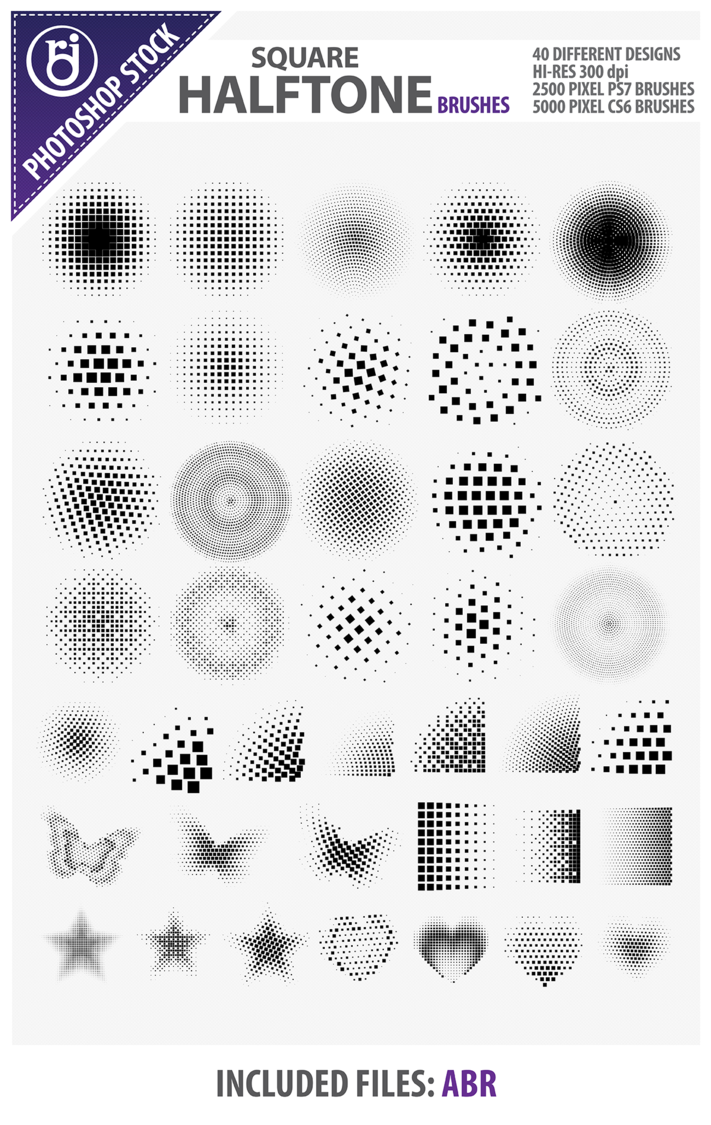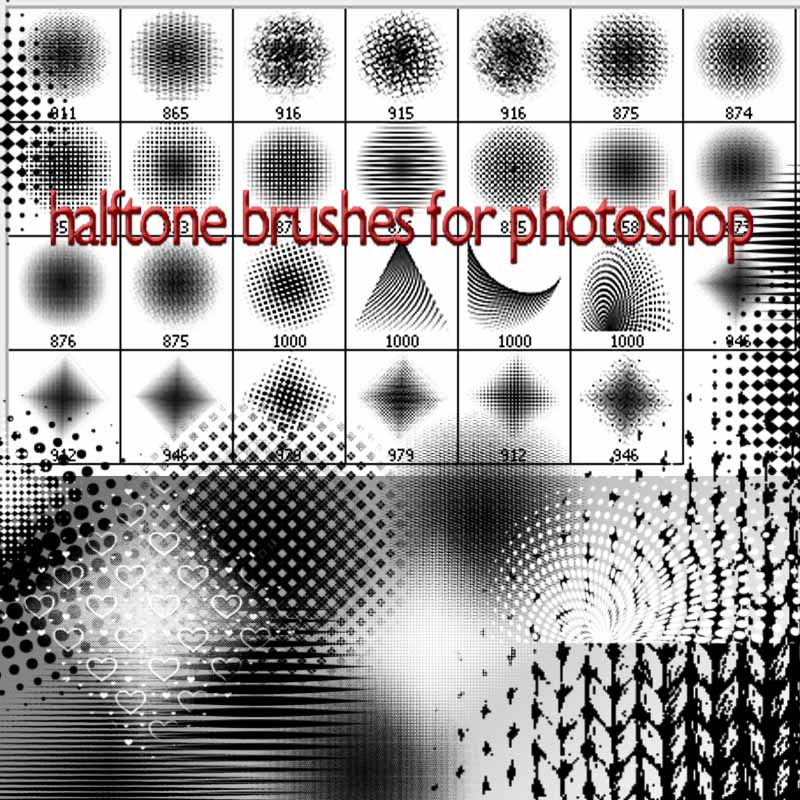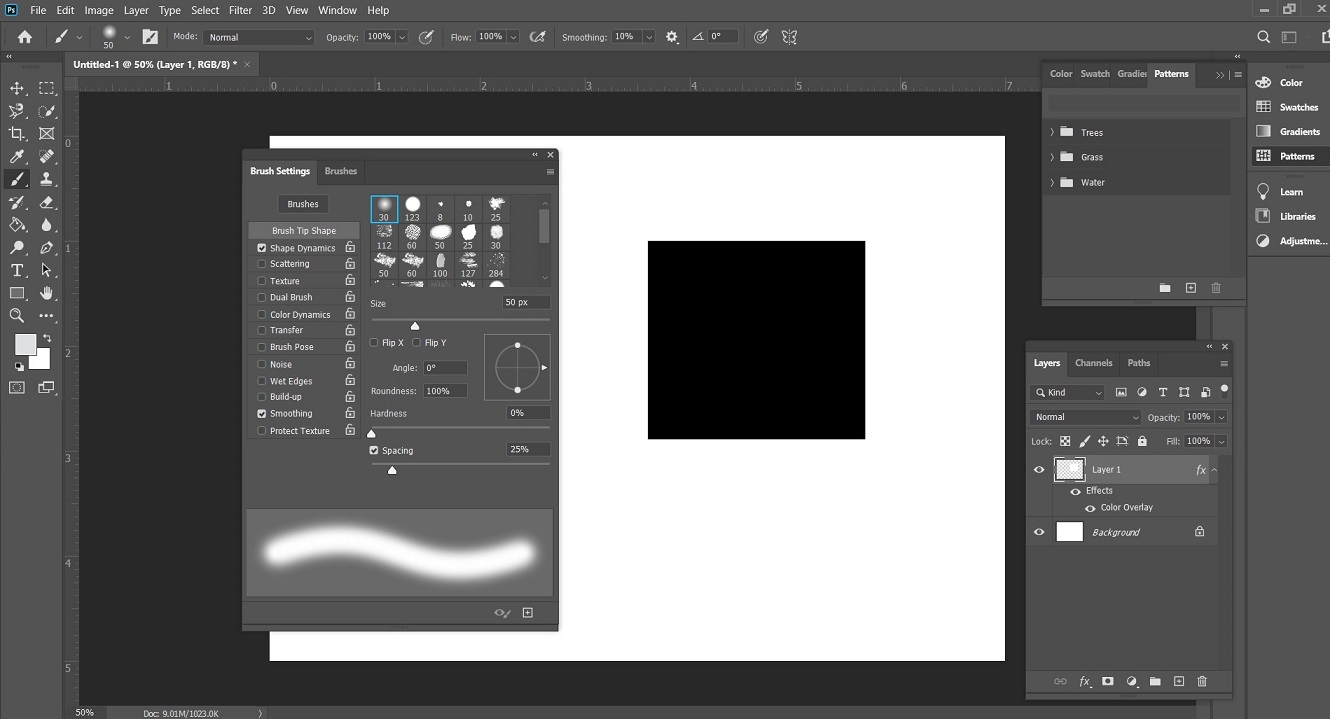
Jitter, as we know by now, means randomness in Photoshop, which means we can use these options to let Photoshop randomly change these three aspects of our brush's color as we paint! Let's look at each of the Color Dynamics options more closely. Then, for better angling, tick Lock and set the Angle Offset to 90 degrees by the slider bar and typing in 90.The Hue Jitter, Saturation Jitter and Brightness Jitter controls. There, untick Pressure and tick Drawing Angle. Tick the Rotation parameter, and select it. Then, finally, we’ll make the brush rotate. Now, you’ll notice that on the start of a stroke, it might be a little faded, so go into Color Rate and turn off the Enable Pen Settings there. In the screenshot, I have 500, but the sweet spot seems to be somewhere between 150 and 200. Just adjust the fade-length by on the slider bar. Of course, this’ll make the stroke distance longer to get to smudging, so we go back to the Opacity.

This makes for a nice textured square brush.

Then, select Brushtip ‣ Predefined and select the default A_Angular_Church_HR brushtip. The Distance sensor will base it on actual pixels, and the Time on actual seconds. The Fade sensor will base the stroke length on brush size. This’ll make the color rate decrease and turn it into a smudge brush as the stroke continues: Make sure that the curve ends a little above the bottom-right, so that you are always painting something.

Then, the trick is to go into Opacity, untoggle Pressure from the sensors, toggle Fade and then reverse the curve as shown above. It’s actually quite easy, but most easy to do since Krita 3.0 due a few bugfixes.įirst, select Basic_Wet from the default presets, and go into the brush editor with the F5 key. How do I make a brush like the one in Sinix’s paint-like-a-sculptor video? Brush-tips:Sculpt-paint-brush ¶ Question ¶


 0 kommentar(er)
0 kommentar(er)
